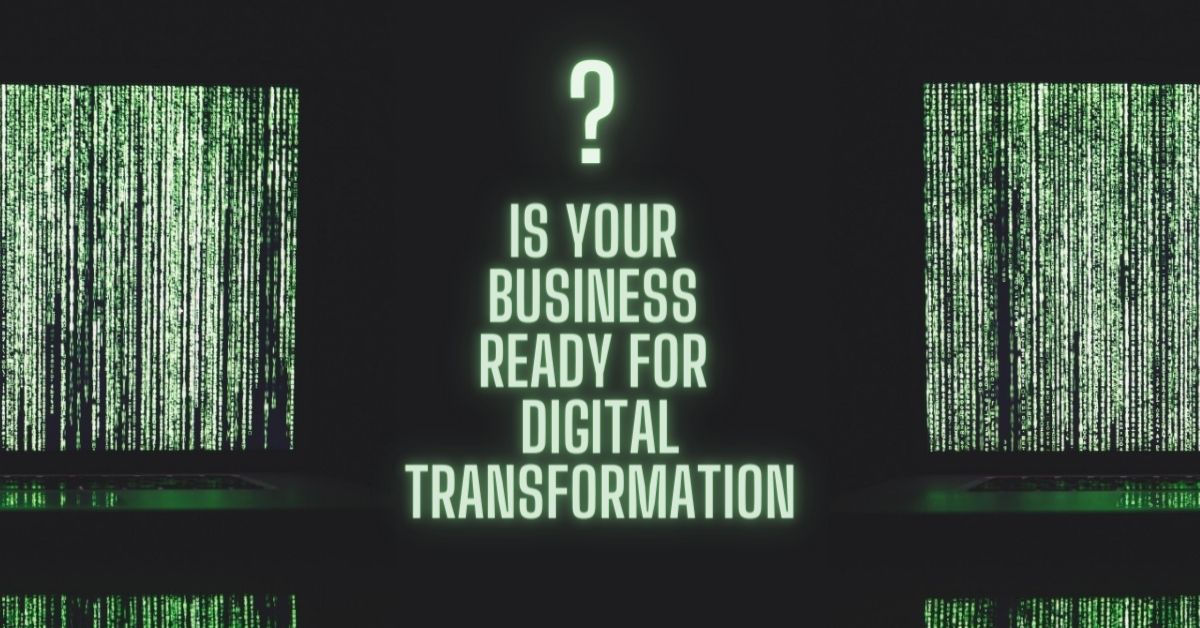Business owners must answer those hard questions of Digital Readiness and find how ready their organization is for digital transformation. The pandemic has accelerated digital disruption across industries. Some companies are scrambling to get hold of their business strategies during the COVID-19 crisis. While few are leveraging technology to thrive their business and keep creating value for their customers.
Digital Transformation Is Not About Technology
Recently there was a popular meme floating on Linkedin. It asked, What is the reason for the digital drive in your organization?, with the three options given as CEO, Chief Digital Officer, and the last one was COVID-19, which was highlighted. Such a situation has been present throughout history – Spanish Flu, The Great Recession, or the recent financial crisis of 2007. Disruptive companies led by visionary and resilient leaders came through the hardship with agile business strategies and always focusing on providing value to their customers.
The need to address the uncertainty is ever so imminent for companies, failing at which could make them obsolete. Digital Readiness translates to ease of adaptability of a company to a rapidly changing landscape in terms of technology. It essentially means how easily an organization can transition to digitized workflows enabled by software and technology.
Nowadays, most companies believe they have gone digital.
So, why are the majority of companies having trouble implementing technology like video conferencing, remote monitoring, remote working, or online training which have been present since the last decade?
Simply because, Digital Transformation is not about technology, it is about strategy, talent, and new ways of thinking.
Successful Digital Transformation Has A People-First Approach.
A transformation does not demand a simple investment in IT assets. Every aspect of the business, from the process, strategy, customer journey, employees, and culture, should embrace digital.
Few objectives of Digital Transformation are to improve business efficiency, manage risk, and generate multiple sources of revenue. However, the end objectives of your company might be different, it always leads to a path where a coherency between human experience and technology is achieved.
Knowing Digital Readiness Helps Your Transformation
Digital Readiness Assessment evaluates whether the employees and customers possess the ability and the will to adapt and manage the digital transformation process. Here are 3 questions with deeper context and type of assessment the business owners can carry out to effectively calculate Digital Readiness:
Are my employees & customers digitally skilled to provide & access the business services online, respectively?
This question deals with cultural assessment and understanding of each aspect of your stakeholders concerning your business services. This would require you to closely know the pain points faced by the stakeholders and measure how digital functions would elevate those pains. Ultimately, technology would empower all the stakeholders when they associate with your business.
As per the KPMG report on digital readiness, companies that don’t use an integrated Customer Relationship Management (CRM) tool and an employee communication tool often face loss in productivity by 28%.
Will my employees and customers trust the flow of confidential information online?
This question deals with all the elements of technological assessment and understanding how the stakeholders would interact with technology. Maintaining data sanctity by deploying digital infrastructure and security measures so that the customer trusts that their confidential information is secure and will not be decrypted easily.
Generating consumer trust will help you create loyal customers. As a result, it will keep your business growing and relevant.
How will the employees respond and adapt to changes in business operations and processes?
The following questions deal with process assessment and understanding of how repetitive tasks can be automated. Moreover, Keep in mind the intensity and frequency of various processes while implementing automation. Data-driven decision making at different levels can make business operations highly efficient. The objective of the automating processes should be to scale and expand your business to multiple geographies.
For instance, your business might already have digital tools in place but are they integrated to create a centralized data platform for making data-driven business decisions?
Respond. Recover. Thrive
To conclude, the time demands from business owners to respond to the overwhelming situation with resilience. After that, recover from the damage done by building business coherency with digital technology and thrive in the post-pandemic world





